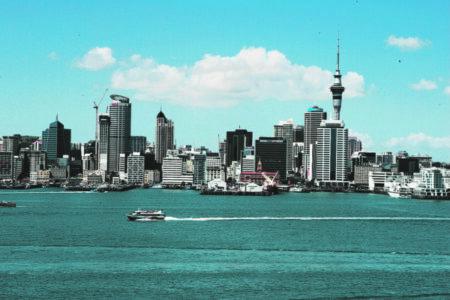
Auckland Council’s Planning, Environment and Parks Committee this week approved a draft strategy for how Tāmaki Makaurau should grow and change over the next 30 years, which will go out for public consultation on Tuesday, June 6.
With Auckland’s population expected to increase by just over half a million people by 2053, the draft Future Development Strategy [FDS] looks at how and where Auckland can best grow and develop. It also addresses protecting and restoring the natural environment, building resilience to natural hazards and climate change, and making the best use of limited funding for infrastructure.
Chair of the Planning, Environment and Parks Committee, Councillor Richard Hills, says significant changes for Auckland in recent years means an updated strategy for how we grow is needed.
“A lot has happened in Tāmaki Makaurau since the last development strategy almost five years ago.
“The Covid pandemic, new government legislation directing more housing intensification in urban Auckland, the effects of climate change being felt more frequently – as seen by the Auckland Anniversary floods and Cyclone Gabrielle – and we have made a commitment to halve our emissions by 2030.
“This changing context means we need to re-examine how we grow over the long term, whether we are growing in a way that both reduces emissions and adapts to climate change, how we consider the cost of growth and how we make sure we are shaping a city that will thrive both now and in the future.
“The Future Development Strategy is a crucial part of how we do that,” says Cr Hills.
Deputy chair of the Planning, Environment and Parks Committee, Cr Angela Dalton, says it’s important that Aucklanders know we are looking ahead and thinking about where and when we grow.
“The role of the FDS is to look at how we grow and whether we open up more land for development or enable more growth to occur in our urban areas,” says Dalton.
“It also looks at the potential repercussions of those choices – can we provide sufficient infrastructure for new communities, what impacts urban expansion will have on our natural environment and on our resilience to climate change and whether we are enabling enough housing and space for businesses for generations to come?”
“The questions that the strategy addresses help us to make the most of Auckland’s growth and to see our region become a better place in the future, despite any challenges that lie ahead.”
What is covered in the Future Development Strategy
The proposed Future Development Strategy outlines the priority areas for growth and investment in infrastructure over the next 30 years in Auckland and recommends that most growth occurs in the existing urban areas. It also proposes delaying or stopping development in specific greenfield areas (undeveloped land) that have previously been identified for future urban development, due to natural hazard risk, impacts on our ability to halve emissions and the high infrastructure costs associated with development.
Auckland Council’s general manager of Auckland Plan, Strategy and Research, Jacques Victor, explains what Aucklanders can have their say on and the timing for the consultation.
“The Future Development Strategy that will go out for consultation at the start of June, is our proposed approach to how we think Auckland should grow and where the priority areas should be for infrastructure investment and growth, while also protecting our environment, responding to climate change and supporting our communities to be more sustainable,” says Victor.
“We want to hear from Aucklanders on whether they think we have got this right.”
“We are doing this work now as we want this strategy to inform the next set of budget decisions we make as a council. Our 10-year Budget, which decides where Auckland Council’s funds go over a 10-year period, is due to be refreshed early next year and so it is important we have the Future Development Strategy adopted in time, so it can influence our investments.”
Aucklanders can have their say on this proposal from Tuesday, June 6. The strategy will then go to the Governing Body for adoption later in the year, replacing the 2018 Development Strategy and the 2017 Future Urban Land Supply Strategy.











